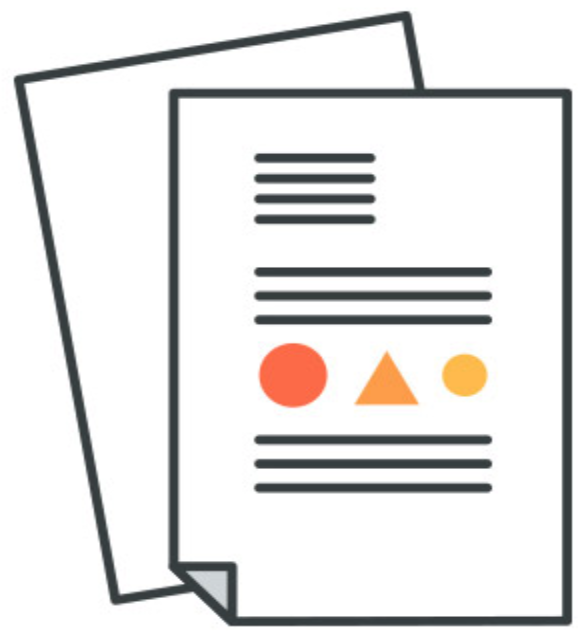Influx has built support teams for more than 300 high-growth brands in the US, Australia, and Europe. We hire, train, and empower a remote community with the top 1% of customer support agents, spread over 120+ cities. Learn more about how it works →
Being proactive when it comes to customer support holiday preparation is easier said than done, but there are a few things that are absolutely worth making the time for…macros. For customer support teams that handle tickets and written interactions, macros can be incredibly helpful if used correctly. This has the power to positively impact any customer support agent’s day-to-day and increase customer satisfaction.
Keep reading to prepare your macros for the holidays with a bonus at the end about hacks for helpdesk!
What are macros?
Macros are also known as canned responses, scripts, or templates. Simply put, a macro is a prewritten message to send out when a matching helpdesk ticket comes in from a customer. When an agent receives a support ticket, they can respond with a matching macro to streamline the process. Having a macro already available instead of having to re-type out the same message over and over again optimizes workflow and increases productivity. It also keeps agents from having to repeat monotonous steps.
In customer service, macros provide three connectors:
1. Productivity automation: Provides actions to perform model-driven app operations. A few examples of productivity automation include:
- Open a new form to create a record
- Open an existing record
- Search the knowledge base for the populated phrase
2. Session connector: Provides actions to perform session-related operations. Examples of session connectors include:
- Get the current tab
- Open application tab
- Refresh the session context
3. Omnichannel connector: Provides actions to perform omnichannel for customer service–related operations. Examples include:
- Send knowledge base article in chat
- Link record to the conversation
- Unlink record from the conversation
During the holidays, macros are an invaluable way to decrease your ticket response time while still giving the same high-level communication and care to each interaction.
Benefits of macros
According to Comm100, 71% of users believe that a quick response from agents improves their customer experience. Customers and CX support teams both benefit from macros because they:
- Minimize human errors
- Automate repetitive tasks with one click
- Adhere to business processes
- Lower the average handling time
- Improve customer satisfaction
During peak sale season, live chat macros make answering frequently asked questions and issues quicker and more efficient - meaning there’s more time to respond to a larger volume of tickets.
Setting up macros for the holidays
Check out our easy-to-follow guide for setting up macros that will help you get started on your own holiday automation! After your macros are set up, as an administrator, you can then view the macro run history, which shows how many times a macro has been run, along with the success or fail status. When you select a macro that failed, you can view the exact action step where the failure occurred.
After the holidays, you’ll want to edit your macros to remove anything holiday related, and then review them quarterly. Check for the following:
- Links aren’t broken and are updated with the most recent information and knowledge base articles
- All macros have proper grammar, spelling, and consistent formatting
- Ensure that all information is correct and accurate
- Trim any unnecessary wording to make the macro concise
- Delete old macros
*After the holidays, you could either update all macros or create new macros and reserve your holiday macros for the next season, but it is vital that agents don’t use holiday-related messaging during any other season.
Six tips for creating strong macros:
- Look at the most common topics you receive. These are a good place to start when figuring out what macros would benefit your team most.
- Don’t make open-ended macros. Agents will want to respond as quickly and efficiently as possible without asking follow-up questions unless absolutely necessary.
- Do your best to answer in the first response rather than deflecting to another department. This avoids frustrating customers and delivers the highest quality customer support possible.
- Be honest in your immediate, automated responses. Let the customer know that the first, immediate response is automation and that agents will respond to them as soon as possible.
- Personalize your macros. Macros are not the end-all-be-all, and agents should still aim to customize each interaction whenever possible.
- Always end on a positive note and make the customer feel good.
Helpdesk hacks for the holidays
The purpose of helpdesk is to resolve customer complaints and queries in an organized and accurate way to ensure customer satisfaction. Macros are generated within helpdesk software, which executes one or several processes at the same time within a ticket. Knowing how to do the following will help you and your agents keep stress low and customers satisfied:
- How to move a change towards implementation when the assigned change manager is unavailable to supervise.
- How to set up your helpdesk automation.
- How to automatically prioritize tickets.
- How to narrow down a customer’s requirement without multiple email iterations.
- How to easily retrieve a request that is accidentally deleted.
- How to automatically reopen a ticket when there is no response from a customer and follow up for better service delivery.
- How to navigate the knowledge base.
Check out our holistic guide for eCommerce holiday planning to continue preparing for peak sales season.
Scalable support solutions
We offer a complete support ops team that answers tickets, 24/7. We’ll help you flex and scale your business as needed with support on demand. Find out how Influx can provide you with consistent, high-quality support that keeps customers loyal.



